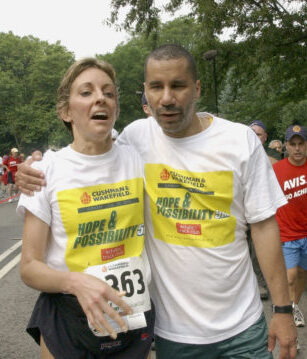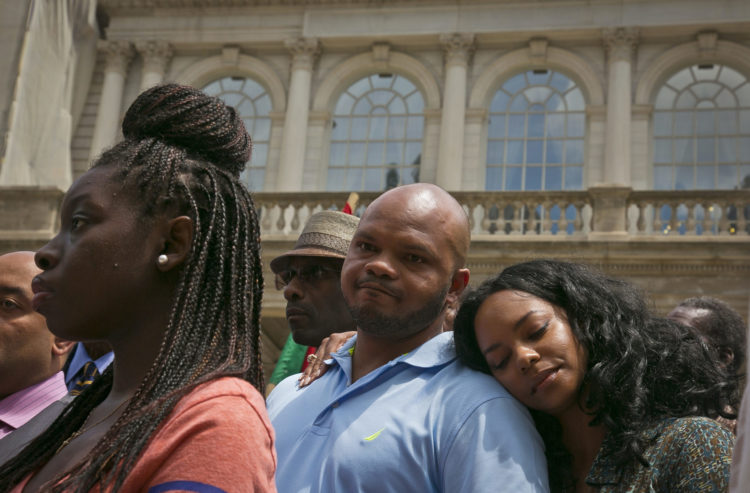In 1990, Joan Didion received an assignment from Bob Silvers, editor at the New York Review of Books, to write about a highly publicized, emotionally fraught crime almost nobody wanted to read about after it was, in theory, solved. Nor did the resulting story, published January 17, 1991, receive much mention amidst the tributes to the many novels, screenplays, memoirs, and magazine narratives produced by Didion, the acclaimed “new journalist” who died last month at 87.
For me, though, “Sentimental Journeys,” constituted her most memorable and outstanding accomplishment as a reporter — one that helped shape my own journalism and whose lessons I carry to this day. Among them:
- How factual evidence gathered through painstaking sourcing, bolstered by a writer’s informed opinions, allowed the shattering of conventional wisdom about the criminal justice system (never her specialty before 1991);
- How an entire metropolis (New York City, no less) can serve as an effective central character in a nonfiction narrative, especially if that central character is beset with multiple personalities;
- How a specific locale (Central Park) within the larger metropolis can serve as an effective supplementary character;
- How historical context (the racist trope of animalistic Black men raping virginal white women) can inform understanding of present-day unrealities;
- How the journalistic convention of protecting the identity of sexual assault victims while naming the suspects can lead to false judgments by the public;
- How the divergent coverage of prominent white victims while downplaying the nightmares of non-white victims rips at the fabric of society and deepens entrenched racism.
The rushed case to avenge the Central Park jogger
The crime prompting Didion’s assignment occurred late the night of April 19, 1989. A woman in her late 20s, later identified publicly as Trisha Meili, was jogging alone in Central Park after dark. She was attacked, sexually assaulted and nearly beaten to death. Meili, who was white, worked as a rising star in the financial district after a privileged upbringing and elite education. From Didion’s story:
She was found, with her clothes torn off, not far from the 102nd Street connecting road at one-thirty on the morning of April 20, 1989. She was taken near death to Metropolitan Hospital on East 97th Street. She had lost 75 percent of her blood. Her skull had been crushed, her left eyeball pushed back through its socket, the characteristic surface wrinkles of her brain flattened. Dirt and twigs were found in her vagina, suggesting rape.
After Meili’s mangled body was discovered, police moved at warp speed: They rounded up and questioned dozens of Black and Hispanic teenagers who had gathered in the park a couple of hours before Meili. Some in the ragtag group had targeted whites in the park for after-dark harassment, but there was no evidence that any had assaulted Meili. Despite that, police focused on six as suspects. Five were indicted.
Those five were ages 14, 15 and 16. Children, really. But millions of outraged citizens stereotyped the suspects as wilding monsters of color, not children at all.
Four of the five suspects offered supposedly voluntary confessions after extensive interrogations. There were no lawyers present, and often no family members, despite settled law that police could not legally question crime suspects under 16 without a parent or guardian in the room. There were no video or audio recordings of the interrogations.

None of that mattered to the daily press at the time. The massive circulation New York Daily News published this headline: “Central Park Horror/Wolf Pack’s Prey/Female Jogger Near Death After Savage Attack by Roving Gang.”
Outrage against the five teens was stoked by other journalists, commentators and politicians. The defendants and their families were portrayed as monsters. Race-specific hatred abounded, relying on ugly stereotypes: non-white youngsters from the housing projects of Harlem; violence-prone kids with no future, family members freeloading on welfare.
Only a few journalists, public commentators and citizens delved beyond the stereotypes to learn a very divergent and positive picture of the five defendants and their families. But that was drowned out by a louder drumbeat: Guilty! Guilty! Guilty! Guilty! Guilty! Nobody with a public megaphone mentioned the standard of “innocent until proven guilty.” Financier playboy Donald J. Trump advocated for the death penalty.
Prosecutors orchestrated two trials — one for three of the defendants, another later for the other two. Jurors reached guilty verdicts, as preordained; the convicted teens entered juvenile detention centers, and later were transferred to violence-ridden adult prisons. Case closed. Sub-humans found, locked away and forgotten.
Until Silvers and Didion decided to court potential calumny by looking deeper:
Criminal cases are widely regarded by American reporters as windows on the city or culture in which they take place, opportunities to enter not only households but parts of the culture normally closed, and yet this was a case in which indifference to the world of the defendants extended even to the reporting of names and occupations.
Investigating flawed investigations
To fully appreciate Didion’s resulting narrative, it is vital to realize that back in 1991 few people believed the vaunted U.S. criminal justice system would put innocent defendants in prison. Almost every journalist, cop, lawyer and judge I knew then subscribed to the conventional wisdom that “all prisoners claim they are innocent, no matter their crime.” I myself was guilty of that notion as a fledgling newspaper reporter working in a high-crime, mostly Black city during the early 1970s.
But a decade later, my perceptions changed. Why?
Mostly because during 1983 I accepted a job running the journalism membership group Investigative Reporters & Editors, which I had joined as a charter member in 1976. Every day, IRE members used me as a sounding board and reporting resource.
A tiny percentage of IRE members were starting to question the purity of the criminal injustice system. Some within that tiny percentage were paying attention to the emerging technology of DNA analysis, which could demonstrate actual guilt or innocence of convicted inmates. Others were probing the questionable reliability of “evidence” presented by police and prosecutors: shaky eyewitness identifications; dependence on jailhouse snitches; doctored police reports; undisclosed exculpatory details; forensic errors in police-operated crime labs, and reliance on “junk science” such as footprint matching, bite mark analysis, and misunderstanding of fire behavior that led to flawed arson convictions.
But when the Meili assault was prosecuted, the now-renowned Innocence Project, based in New York City, did not exist. An early version, named Centurion Ministries, was founded by a non-lawyer seminary student in Princeton, New Jersey, but it could barely afford to accept cases given its tiny, donation-based budget.
I joined the journalists who were investigating questionable convictions. Part of my early education came through a seminal 1932 book by a law professor, from the studying the efforts of lawyer Erle Stanley Gardner (mostly famous for writing the Perry Mason novels) to form “the Court of Last Resort” in the 1940s, by reaching out to pioneering reporter Gene Miller at the Miami Herald, and by delving into my first specific case of suspected wrongful convicted.
Ellen Reasonover was serving prison time for the murder of a service station attendant in St. Louis, Missouri. Her conviction made no sense based on my reading of the trial transcript, among other documents: Why did police arrest her based on zero evidence that I could detect? Why did the prosecutor file charges without detectable evidence or the faint scent of a motive? How did 12 jurors — all white — reach agreement?
Still a novice in the realm of wrongful convictions, I was stunned by the verdict. It is relevant to know that Reasonover was Black and the murdered attendant was white. Reasonover, a young, single mother, escaped the death penalty only because one juror voted to spare her.
Probing the lack of evidence and logic
When I look back now at Didion’s story about the Meili case, her painstaking research makes the flaws in the Meili convictions clear.
She would have noted the weaknesses in the prosecution’s case. For example, the four confessions failed to agree on numerous details, and in some instances contained information that was verifiably false. No matches had been found between Meili and the defendants regarding semen, blood or analysis of fingernail scrapings. And the tunnel vision of the police ignored factors that would lead to the arrest of the actual perpetrator a decade after the attack. As Didion plainly stated:
There were, early on, certain aspects of this case that seemed not well-handled by the police and prosecutors, and others that seemed not well-handled by the press.
Careful research before, during, and after the two 1990 trials would have uncovered the exaggerations and outright lies of the Manhattan prosecutors, and would have revealed a rarely used procedure within the court system to designate a specific trial judge — one with a well-deserved reputation as pro-prosecution.
That analysis in her 1991 narrative jumped out at me, given my own focus on traditional evidence of a crime, or lack of such evidence. Yet those paragraphs constituted just a fraction of Didion’s piece; most of the thousands of words she wrote offered an entirely fresh approach to understanding miscarriages of justice, an approach I had never before considered.
“Slow journalism” as a form of sociology
Perhaps no agreed-upon label for Didion’s approach to this narrative exists. Here is my suggestion: Sociological Evidence.
I have always considered sociology to be “slow journalism.” Among other talents, Didion exhibited attributes of a masterful sociologist in much of her nonfiction.

She accomplished that within the Central Park jogger narrative with context, context, and more context. Even the design of the park becomes a character. That design, dating back to the 1850s, suggested potential dangers for females alone in portions of the park after dark. In actuality, Didion wrote, Central Park had been sentimentalized as “an artificial pastoral,” when from the beginning it was a capitalistic project of “contracts and concrete and kickbacks.”
The realities of New York City become characters, too — especially powerful white New Yorkers distrusting non-white members of a perceived underclass, and non-white New Yorkers distrusting those wielding power:
The perennially racist coverage of crime by white-owned New York City newspapers and broadcast stations also qualified as a character in Didion’s narrative. She demonstrates in paragraph after paragraph how such racist coverage demonized the teenage defendants and their families, while turning Meili into a plaster saint. For mainstream journalists and the politicians they quote, violent crime becomes an all-purpose bogeyman to cover up what Didion considers to be the essential unworkability of New York City as a metropolis. At several junctures, Didion suggests New York City demonstrates attributes of third-world nations:
Stories in which terrible crimes are inflicted on innocent victims, offering as they do a similarly sentimental reading of class differences and human suffering, a reading that promises both resolution and retribution, have long performed as the city’s endorphins, a built-in source of natural morphine working to blur the edges of real and to a great extent insoluble problems.
Naturally, loyalist, privileged New Yorkers expressed offense at Didion’s atmospheric portrayal.
No run-on of excerpts from “Sentimental Journeys” can adequately demonstrate the boldness or complexity of Didion’s take on the crime, and what it said about New York. I leave it to you to study each Didion paragraph from the narrative and decide for yourself whether her high-wire approach deserves praise.
Delayed justice
Before signing off, I feel compelled to add a postscript:
Nobody, including Didion, could have predicted the shocking denouement of the five wrongful convictions — not just wrong, but egregiously wrong, demonstrating the bitter wages of incompetent, dishonest, race-biased cops, prosecutors, judges and, yes, journalists.
In 2002, more than a decade after Didion’s narrative, a career criminal named Matias Reyes confessed to the Meili assault. Age 18 on the fateful night, Reyes entered Central Park, intent on rape. He noticed Meili alone, snuck up on her, bashed her skull, dragged her body to an even more secluded spot, raped and beat her.
No wolf pack. No gang rape. No connection between Reyes and the five convicted teens. Reyes raped other women during 1989 and 1990, but police failed to connect him to those rapes before the two trials, despite obvious clues.
The final kicker: Minutes after Reyes raped Meili, two police officers saw him strolling out of Central Park. The cops spoke with him briefly. They never detained him for questioning.
***
Steve Weinberg former executive director of Investigative Reporters and Editors and instructor at the Missouri School of Journalism, is the author of several nonfiction books and a freelance writer for magazines.



